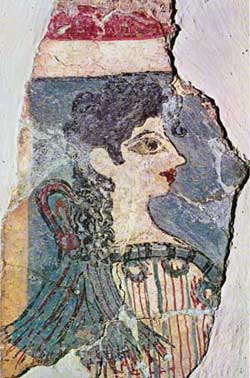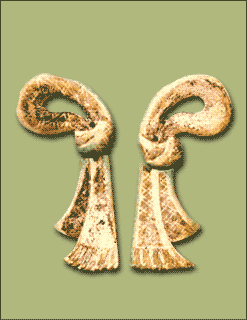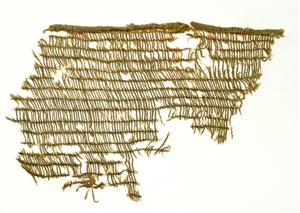You know how it goes. You see these things on the internet and you just have to make one. You know you're going to wish you hadn't, but you can't help yourself.
I saw this recently:
It's a flinderhaube, a hat covered in sequins (flinderlein) which was fashionable in the 16th century in what is now Germany. It's absolutely perfect for the last Historical Sew Fortnightly challenge of 2014, All that Glitters.
As it turned out, drafting the pattern was a bit of a challenge. Flinderhauben could be made with netting, like this one, but I think my Georg Pencz example is made out of cloth. I tried a number of different ideas for the pattern, but I found I got the best shape using the goldhaube pattern developed by Genoveva von Lubeck, which she has very kindly made available here. I've made a couple of alterations to get the same look as in the picture, but only small ones.
There are a lot of different flinderhaube shapes shown in paintings, so I think there may have been quite a range of different patterns in use.
Anyway, this is what I ended up with:
I think it's better photographed with a flash, which shows up the shot silk and makes the flinderlein glitter properly. These things must have looked pretty spectacular in the sun or by candlelight.
The Challenge: All that Glitters.
Fabric: Half a yard of pink and gold shot silk, and the same of red linen for lining it.
Pattern: Genoveva von Lubeck's goldhaube pattern.
Year: 1540 or thereabouts.
Notions: Lots of little gold teardrop shaped sequins, glass pearls, and some gold thread.
How historically accurate is it? The fabrics and sewing are probably okay, and the pattern is a very well researched one. However, budget constraints meant that I used glass imitation pearls and synthetic gold thread. I think they actually did have glass pearls at this time, but they wouldn't have looked like these ones.
It does need more flinderlein and I may add some more at some point, but right now this will just have to do because I've had enough of sewing flinderlein on this thing.
Hours to complete: Maybe 15 - 20? I didn't really keep track.
First worn: Today, for photos.
Total cost: All up, about $45.
I saw this recently:
 |
| Georg Pencz, Portrait of a Lady, c1540, image from here. |
As it turned out, drafting the pattern was a bit of a challenge. Flinderhauben could be made with netting, like this one, but I think my Georg Pencz example is made out of cloth. I tried a number of different ideas for the pattern, but I found I got the best shape using the goldhaube pattern developed by Genoveva von Lubeck, which she has very kindly made available here. I've made a couple of alterations to get the same look as in the picture, but only small ones.
There are a lot of different flinderhaube shapes shown in paintings, so I think there may have been quite a range of different patterns in use.
Anyway, this is what I ended up with:
I think it's better photographed with a flash, which shows up the shot silk and makes the flinderlein glitter properly. These things must have looked pretty spectacular in the sun or by candlelight.
The Challenge: All that Glitters.
Fabric: Half a yard of pink and gold shot silk, and the same of red linen for lining it.
Pattern: Genoveva von Lubeck's goldhaube pattern.
Year: 1540 or thereabouts.
Notions: Lots of little gold teardrop shaped sequins, glass pearls, and some gold thread.
How historically accurate is it? The fabrics and sewing are probably okay, and the pattern is a very well researched one. However, budget constraints meant that I used glass imitation pearls and synthetic gold thread. I think they actually did have glass pearls at this time, but they wouldn't have looked like these ones.
It does need more flinderlein and I may add some more at some point, but right now this will just have to do because I've had enough of sewing flinderlein on this thing.
Hours to complete: Maybe 15 - 20? I didn't really keep track.
First worn: Today, for photos.
Total cost: All up, about $45.













































